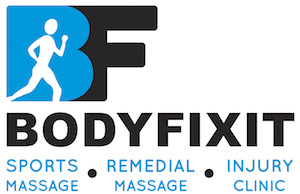Ah, winter… Cozy nights, warm blankets, and the TV calling you to curl up and stay put. But here’s the thing, embracing the cold with gentle exercise can be a game-changer for your health and well-being, whatever your age!
Fight the winter blues
The winter blues, and Seasonal Affective Disorder (SAD), can dampen your mood, zap your energy, and make those cozy nights under the covers seem even more tempting. But don’t be fooled by the allure of hibernation! Research shows that even small doses of exercise can be a powerful weapon against the winter blues.
One study published in the Journal of Affective Disorders found that participants who engaged in just 30 minutes of moderate-intensity exercise three times a week experienced a significant improvement in their mood and a reduction in depression symptoms compared to those who remained inactive. An article published in the British Journal of Sports Medicinea also found that exercise is an effective treatment for SAD, with benefits comparable to that of light therapy, a common treatment for the condition.
The science behind this mood-boosting effect is multifaceted. Exercise triggers the release of endorphins, those feel-good chemicals that can lift your spirits and combat stress. It also improves blood flow to the brain, which can elevate your mood and enhance cognitive function. Additionally, regular physical activity can promote better sleep, a crucial factor in managing SAD symptoms.
Regular Movement Matters
Think of it like this: your body is a beautiful machine, and just like any machine, it needs regular movement to stay in top shape. Even small doses of activity can:
- Boost your mood and energy levels: Winter blues got you down? Exercise releases endorphins, those natural feel-good chemicals that put a spring in your step (and a smile on your face).
- Keep your joints happy: Regular movement lubricates your joints, eases stiffness, and helps prevent pain, making those frosty mornings that much easier.
- Strengthen your bones: As we age, bone density can decrease. Gentle exercise helps combat this, keeping your bones strong and reducing the risk of osteoporosis.
- Sharpen your mind: Feeling forgetful? Exercise improves blood flow to the brain, enhancing memory, focus, and overall cognitive function.
- Help you sleep better: Tossing and turning? Exercise can tire you out in a good way, leading to deeper, more restful sleep.

Perfect-for-winter gentle exercise ideas
1. Indoor Fun:
- Walking: Go window shopping, explore a museum, or even walk at home with an online walking video. Walking is low-impact, strengthens your heart and muscles, and is gentle on your joints and it all counts!
- Chair Yoga: No need for fancy mats! Chair Yoga offers gentle stretches and poses you can do from the comfort of your chair, improving flexibility, balance, and mindfulness.
- Pilates: This low-impact practice focuses on core strength, posture, and flexibility, making it ideal for maintaining joint health and preventing injuries.
2. Embrace the Outdoors (Safely):
- Nordic Walking: Take walking up a notch with Nordic poles! This engages your upper body and core, burns more calories, and provides extra stability on icy surfaces. Just remember to dress warmly and wear proper traction footwear.
- Winter Birdwatching: Bundle up, grab your binoculars, and head to a local park or nature reserve. Spotting colorful winter birds and learning about their habits is a surprisingly engaging and active way to spend a crisp afternoon.
- Geocaching: Embark on a treasure hunt with a twist! Geocaching combines hiking or walking with the thrill of searching for hidden containers using GPS coordinates. It’s a fantastic way to explore new areas, get some fresh air, and have a little adventure.
- Gentle Winter Gardening: Don’t let the frost stop you from nurturing your green thumb! Many cold-hardy vegetables like kale, spinach, and turnips thrive in winter. Plan your winter garden, get your hands dirty in the sunshine, and reap the benefits of homegrown veggies come spring.
- Volunteer Outdoor Activities: Combine exercise with helping your community by volunteering for projects like snow removal for the elderly, cleaning up local parks, or planting trees. You’ll get your heart rate up, gain a sense of purpose, and make a positive impact.

3. Remember, Safety First:
- Listen to your body: Start slow and gradually increase intensity and duration. If something hurts, stop.
- Stay warm and dry: Dress in layers, wear moisture-wicking clothing, and protect your hands and head from the cold.
- Mind the ice and snow: Wear boots with good traction and be extra cautious on slippery surfaces. Take shorter steps and avoid uneven terrain.
- Stay hydrated: Even in winter, it’s important to stay hydrated. Carry a water bottle and sip regularly.
Bonus Tip: Make it social! Grab a friend or join a group fitness class. Having company keeps you motivated, provides extra accountability, and makes exercise more fun.
Whether it’s a brisk walk outdoors, a gentle Pilates session in your living room, or a fun dance class with friends, find an activity you enjoy and get moving. Your body and mind will thank you for it!


